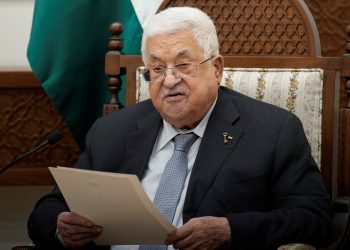Investigations Challenge IDF’s Claims as Evidence Suggests Israeli Military Involvement in the Fatal Attack on Palestinian Medics and Civilians
In a developing narrative laden with tragedy and controversy, the clarity of events surrounding the death of a six-year-old Palestinian girl and the paramedics who sought to rescue her in Gaza has become mired in conflicting accounts and elusive details. Palestinian paramedics stated that they had received assurances of safe passage from the Israel Defense Forces (IDF)—an understanding that turned grimly illusory when they, and the young girl they intended to save, were killed in a violent assault.
The initial statement from the IDF painted a widely different picture—a portrayal of non-involvement and disassociation from the incident that occurred in the vicinity of the Hamada family vehicle. They claimed their forces were neither proximate to the vehicle nor involved in any actions that would have necessitated the granting of passage for the ambulance.
The U.S. State Department, actively engaged with its Israeli counterparts on the matter, publicly shared its communications. “The Israelis told us there had, in fact, been IDF units in the area, but the IDF had no knowledge of or involvement in the type of strike described,” spokesman Matthew Miller articulated, reporting a narrative that conflicted with Palestinian accounts.
However, an in-depth investigation launched by The Washington Post suggests a different version of the fateful events. The reputed outlet’s investigation presents evidence that Israeli armored vehicles were positioned in the area at the time of the assault, challenging the IDF’s official stance.
The Post’s findings include a formidable body of evidence: satellite imagery, detailed records of dispatcher communications, photos and videos collected from the chaotic aftermath, and interviews with numerous witnesses and experts. Viscerally, the urgent cries of Hind and her cousin Layan were heard pleading for help, while the sounds of gunfire—reportedly consistent with known Israeli munitions—provided a menacing backdrop to the recordings that obtained.
This auditory evidence, coupled with the extensive and specific nature of the damage sustained by the ambulance, puts forth a grave contradiction to the claims posited by the IDF. The analysis was further supported by numerous experts: military strategists, satellite analysts, munitions specialists, and forensic audio professionals.
These findings contribute to an ongoing dilemma that intertwines the right to humanitarian aid with the complexity of combat operations, raising poignant questions about collateral damage and the sanctity of medical neutrality in conflict zones.
The deaths of the paramedics and the young girl, heart-rendering in their own right, have thus compounded into a poignant emblem of the larger civilian plight within the Israeli-Palestinian conflict—a dispute that has seen its share of purported miscommunications, allegations of human rights violations, and tragic consequences.
Investigations on the Way
The incident acts as a profound rallying cry for international and impartial investigations into events taking place in the theater of armed conflict—investigations necessary to navigate the webs of conflicting information that beset such complex environments. There is a clamor for accountability and the need to uphold international laws designed to protect non-combatants and medical professionals working to save lives amidst turmoil.
Furthermore, the wider discourse surrounding the conflict and unintended casualties has swelled in gravity, bringing to the fore the ethical responsibilities of state and non-state actors alike. Responsibilities that demand the protection of civilians and the unimpeded operation of medical services even within the vortex of unyielding hostilities.
The potential discrepancy between the narrative proffered by the IDF and the evidence arrayed by The Post makes manifest the profound difficulty of discerning fact from narration in conflict zones. For the Palestinians affected by the unfolding of such devastating episodes, the imperative for truth becomes a matter of justice, remembrance, and future deterrence.
As international observers, diplomatic entities, and the global community digest these findings, the broader implications of the IDF’s actions and the robustness of their official statements come under scrutiny. It is an examination that does not merely seek to adjudicate past events, but to form a bulwark against the potential for future tragedies of similar nature.
Amidst calls for a deeper inquiry, the Israeli government and military entities are faced with growing pressure to account for their conduct in zones where the margin between combatants and the innocent is precariously thin. The ultimate resolution of this case will not only bear consequences for those directly involved but may also significantly cast its shadow upon the laws of warfare—as they pertain to the safety of non-combatants and the venerated operations of rescue and medical personnel in active conflicts— and the sanctity of international humanitarian norms.






![Will Western Countries Respond to Iran's attack on Israel? [Part One]](https://al-sarira.com/wp-content/uploads/2024/04/ddd-1-75x75.jpg)
